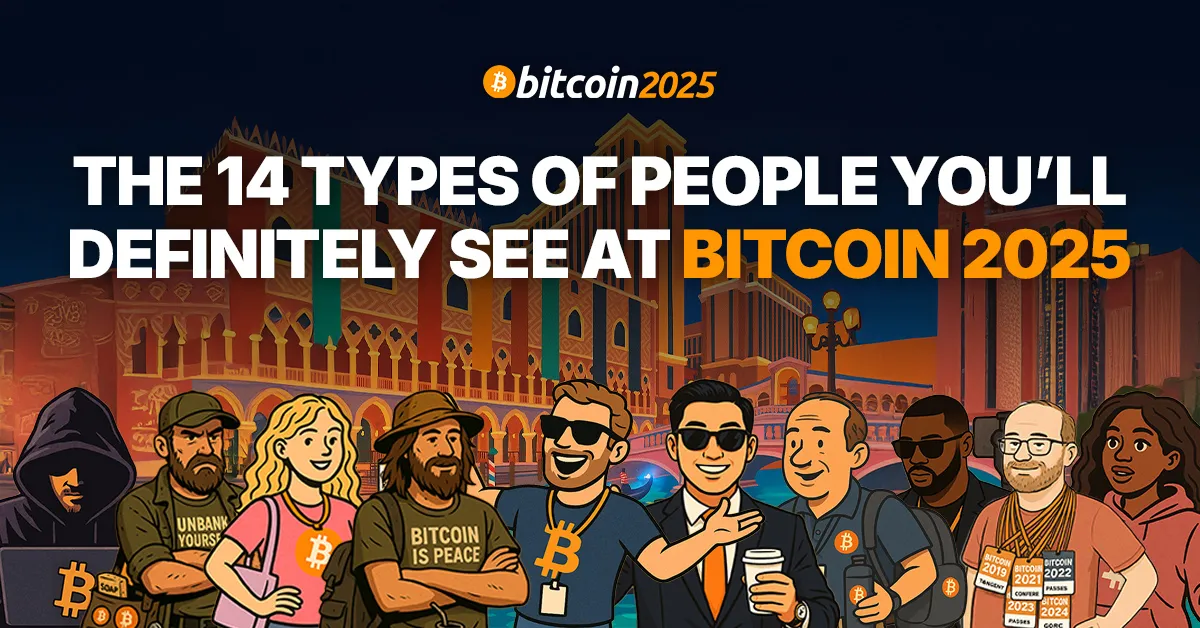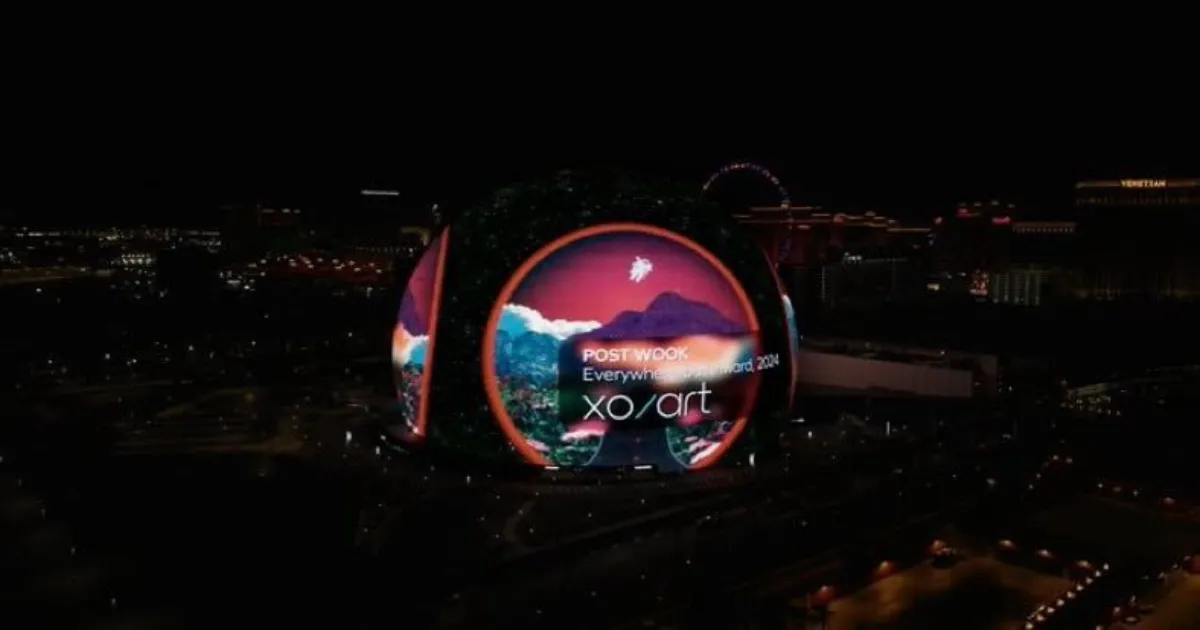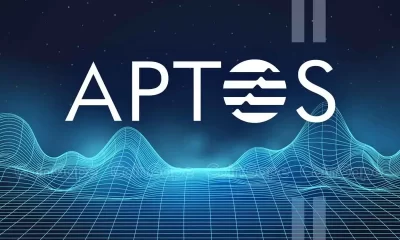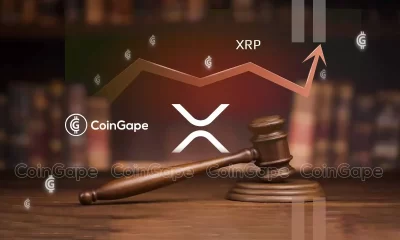Culture
Power Play: How Bitcoin's Institutionalization is Reshaping Its Future
Published
2 months agoon
By
admin

This election cycle saw a sharp increase in political spending from cryptocurrency companies, positioning the industry to influence U.S. politics. Already several states have begun exploring the creation of strategic Bitcoin reserves. As Bitcoin becomes more institutionalized, its adoption by state treasuries is seen as a victory for the crypto sector.
However, this trend raises concerns about the future rights of Bitcoin holders, as greater government oversight and institutional involvement could transform Bitcoin from the cypherpunk’s dream of decentralized, peer-to-peer currency into just another financial asset.
In the 2024 election cycle, cryptocurrency corporations have spent over $119 million to influence federal elections, with nearly half of all corporate political donations this year coming from the crypto sector. These funds have been channeled primarily into a non-partisan super PAC, Fairshake, which supports pro-crypto candidates and opposes crypto skeptics. Crypto companies are now the largest corporate political spenders, surpassing even Koch Industries, which has contributed significantly but remains far behind in comparison. Since the 2010 Citizens United ruling, crypto corporations have spent $129 million, making them the second-largest corporate election spenders after fossil fuel companies. This unprecedented level of spending reflects the industry’s push to shape regulations in its favor.
With the election over, there is an anticipated push for states to adopt more crypto-friendly policies, including allowing public pension funds and treasuries to invest in Bitcoin. Some state pension funds such as Wisconsin and Michigan have already added Bitcoin ETFs to their portfolios. In November, Representative Mike Cabell introduced the Pennsylvania Bitcoin Strategic Reserve Act, proposing that the state treasurer allocate up to 10% of Pennsylvania’s General Fund, Rainy Day Fund, and State Investment Fund into Bitcoin. Following this in December, Texas Representative Giovanni Capriglione proposed a bill for a strategic Bitcoin reserve to be held for at least five years in a cold wallet and in Ohio Representative Derek Merrin has a bill for the creation of a Bitcoin fund in the state Treasury and grants the state Treasurer with discretionary power to purchase Bitcoin.
Meanwhile, some U.S. states have taken the lead in cryptocurrency and blockchain regulation. Arizona has considered legislation to define Bitcoin as legal tender and permit state agencies to accept cryptocurrency payments. Oklahoma has enacted laws affirming rights to self-custody cryptocurrencies and engage in digital asset mining. Pennsylvania’s House passed a bill securing rights to self-custody digital assets and conduct cryptocurrency transactions and Louisiana now has provisions for node operation and home digital asset mining. Recently eighteen U.S. states also filed a lawsuit against the Securities and Exchange Commission (SEC), seeking to halt its enforcement actions on cryptocurrency regulation. The states argue that the SEC is overstepping its authority by attempting to regulate digital assets without explicit Congressional approval. They contend that such regulatory power should reside with individual states. It is unknown if the courts will be favorable to this legal argument.
At the federal level, meanwhile, regulatory clarity is still sadly lacking, and Bitcoin’s classification as a commodity rather than legal tender adds further complexity to the regulatory framework. This year the CFTC and SEC have intensified their enforcement actions against cryptocurrency firms continuing an aggressive regulatory approach. Recent legal actions against Tornado Cash and Samourai Wallet show the federal government’s concerns with digital assets, such as peer-to-peer transactions and “unhosted” wallets bypassing traditional financial oversight, creating a challenge for AML/CFT (Anti-Money Laundering / Countering The Financing Of Terrorism) enforcement, especially when paired with anonymity-enhancing tools like mixers. While some states have been favorable towards Bitcoin, most have no policy and have just applied existing money transmission laws to virtual currencies, requiring businesses dealing with cryptocurrencies to obtain money transmitter licenses. Without federal clarity Bitcoin and cryptocurrency companies wishing to serve the US market have to navigate a patchwork of different laws across all 50 states, keeping out all except only the most well financed operations.
State level investment marks a significant shift from Bitcoin’s origins when it emerged as an alternative to the traditional financial system. Governments and regulators voiced concerns focused on money laundering, tax evasion, and criminal use. Bitcoiners have cheered on the rise of state and corporate strategic bitcoin reserves, but treasury adoption does not necessarily lead to greater rights for holders of bitcoin. Just because governments hold Bitcoin, does not mean that they will suddenly be okay with everyone else holding it or decide to give up the power of the fiat printer. If political priorities follow funding, the crypto sector’s primary goal this year appears to be influencing state pension funds and establishing strategic Bitcoin reserves, instead of getting written into law rights to self custody or greater privacy.
The strategic reserve push marks a clear shift from Bitcoin’s anti-establishment origins as a peer-to-peer currency without intermediaries, pushing it toward becoming solely a treasury asset. Currencies do not need third parties, you exchange the currency for the goods and services you want directly. Assets, on the other hand, typically demand third parties. In order to obtain the good or service you must sell the asset for the currency, borrow against the asset, or lend out the asset for a yield. There are tax professionals needed to report the gains and losses, accountants to track the asset and its derivatives, lawyers to draw up the contracts, police and regulators to enforce the contracts, banks to issue, hold, and control the currency, and as always politicians to write the laws and regulations that decide the winners and losers.
Bitcoin as a treasury asset poses no threat to the establishment. It only reinforces the existing system and rewards Bitcoin holders with rising prices. As a treasury asset, Bitcoin is no different from gold, pork bellies, or mortgage-backed securities; just another commodity to be endlessly packaged, derived, and traded. On the other hand, Bitcoin as freedom money that can be held privately and transacted without permission challenges the status quo and can be a powerful tool for financial equality. It empowers the individual over the group, levels the playing field for those excluded from the current financial system, protects people from the robbery of inflation, and actually allows market forces to determine winners and losers. Digital gold stored in secure vaults with financial oversight would address the federal government’s concerns about Bitcoin, which would both legitimize it and encourage institutional adoption, but rising prices might blind people to what they would lose in the process if Bitcoin continues to follow this path…
This is a guest post by Will Jager. Opinions expressed are entirely their own and do not necessarily reflect those of BTC Inc or Bitcoin Magazine.
Source link
You may like


Apple Delists 14 Crypto Apps in South Korea Including KuCoin and MEXC Exchanges Amid Regulatory Crackdown


Athens Exchange Group eyes first onchain order book via Sui


Futureverse Acquires Candy Digital, Taps DC Comics and Netflix IP to Boost Metaverse Strategy


Court Grants Ripple And SEC’s Joint Motion To Suspend Appeal


AVAX Falls 2.1% as Nearly All Assets Trade Lower


What is a VTuber, and how do you become one in 2025?
Culture
How Academia Interacts With The Bitcoin Ecosystem
Published
7 hours agoon
April 16, 2025By
admin
At the MIT Bitcoin Expo earlier this month I had the opportunity to sit down and talk with Neha Narula, the Director of the Digital Currency Initiative under the MIT Media Lab.
Neha previously studied at MIT, completing her PhD in 2015. Her research and work has tended to focus on distributed systems and databases, with many contributions involving analysis of the potential shortcomings and risks of Central Bank Digital Currencies (CBDCs).
She previously worked on relaunching the news aggregation platform Digg, and worked at Google as a senior software engineer, where she designed Blobstore, a scheme for redundant replication and delivery of massive amounts of data.
We discussed the history of the MIT DCI and its role in the history of Bitcoin development in research, as well as the role of academic research in general as it relates to Bitcoin and cryptographic or blockchain systems.
You can watch the interview here:
Source link
conference
The 14 Types Of People You’ll Definitely See At Bitcoin 2025
Published
5 days agoon
April 12, 2025By
admin

Loud. Friendly. Huggy. The Bitcoin Bro is your hype man for hyperbitcoinization. He doesn’t know what “joules per terahash” means, but he’s onboard for the vibes and will yell “Buy the dip!” during your panel Q&A.
They party hard, orange-pill harder, and are basically Bitcoin’s version of a frat brother with a bull market pump tattooed on his calf.


Slicker than a fresh seed phrase, this guy’s teeth are whiter than your Lightning wallet. He’s rented a Lambo for the afternoon and drops your first name way too often, like he’s trying to sell you a time-share in the metaverse.
He doesn’t care about decentralization. He cares about gains, baby. And tailoring. Always with the tailoring.

The apocalypse isn’t a threat—it’s a plan. This dude hasn’t touched fiat since 2018 and bathes in non-KYC sats. He’s already learned to make his own soap and catch fish from nearby lakes and streams.
He’s not paranoid. He’s prepared.


Lives in a van. Pays for tacos with lightning. Might be hiding from the IRS (but only spiritually). They believe Bitcoin is peace, man. And also chaos. And also freedom.
Will fix your flat tire in exchange for a hammock spot and a cold yerba mate.

The unsung hero of Bitcoin. Speaks only in thermodynamic math and SATA cable specs. Makes ASIC firmware upgrades look like wizardry, but can’t explain what he does to his mom without her crying.
Definitely knows the precise BTU-to-wattage ratio for his off-grid, solar-powered mining container. Definitely doesn’t know what “small talk” means.


Yes, plural. Yes, anonymous.
They don’t want to talk to you. They don’t want to be on your podcast. They don’t even want you to know they’re here. Ask them when something will be done and you’ll get the sacred prophecy: “Two weeks.”
They are the shadowy super coders that Elizabeth Warren warned you about—hunched over ThinkPads, pushing protocol upgrades that will quietly redefine monetary history. You won’t recognize them. That’s by design.

Armed with a gimbal and a dream. Their camera roll is 80% memes, 20% selfies with CEOs. Some are here to spread the signal. Some are here for the clout. All are uploading something right now.
Will say “Let’s run it back!” at least 17 times a day.

You’ll spot him by the gravity-defying stack of laminated badges swinging from his neck like a wearable timeline. He doesn’t say much—he lets the passes do the talking. Each one’s a badge of honor. Each one says: I was there.
He’s not here to attend panels—he’s here to assert conference dominance.


Branded polo. Branded backpack. Branded soul. You don’t even know how you ended up holding his business card. He’s not here to network—he’s here to execute. He moves in packs, wears his lanyard like a badge of honor, and will be back at the booth precisely 15 minutes after lunch.
Doesn’t talk about Bitcoin. Is Bitcoin.

Old-school finance dudes who smelled the smoke from Wall Street and headed toward the orange glow. Calm. Calculated. Dollar cost averaging into the sunset.
They don’t shill. They don’t yell. They just quietly stack and nod wisely at panels.

Sleeps 3 to a hotel room and burned half their Series A to get to Vegas. They’re pitching a new Lightning wallet-slash-social network-slash-AI market prediction engine and just need one person to believe in them.
Respect the hustle.


God bless them. They’ve been standing next to their Bitcoin-obsessed partner for three straight days, pretending to understand mining pool fee structures and nodding politely through 5-hour dinner debates.
They are the backbone of the conference. The true MVPs. Probably counting down the minutes to the spa.

Not who you think. No Gucci belts. No megaphones. Just quiet confidence, a phone permanently in hand, and a passive stake in something that’s quietly revolutionizing finance.
Some got lucky. Some built empires. All will ignore your pitch deck.

The rarest sighting of all: A woman. Yes, they exist. Yes, they know more than you. And yes, they’re already five steps ahead of your “Have you heard of Bitcoin?” icebreaker.
Bonus: They’ll probably be the ones explaining immersion cooling to you.
One Event. Endless Energy. Absolute Chaos.
Bitcoin 2025 is more than a conference. It’s a decentralized carnival of code, conviction, and characters. Whether you’re here to build, learn, chill, or meme—there’s a place for you in the movement.

This article was inspired by the video “The People of Bitcoin 2022 Miami Conference” by SPACE DESIGN WAREHOUSE. We acknowledge and appreciate the original creative concept, which served as a foundation for this updated and expanded interpretation for Bitcoin 2025. We encourage readers to view the original video and support the creator on YouTube.
At Bitcoin Magazine, we believe in the power of open-source ideas—because great content, like great code, is better when it’s built together. If you have something you’d like to see featured—whether it’s a video, meme, sketch, or spicy take—send it our way at [email protected]. If we use it, we’ll give you credit in the article and share your work with the broader Bitcoin community.
Source link
Culture
Surreal And Immersive Art On Bitcoin & The Future Of Digital Expression
Published
2 weeks agoon
April 3, 2025By
admin
As the Bitcoin Conference 2025 approaches, set for May 27-29th at the Venetian in Las Vegas, digital artist Post Wook—known for her surreal, psychedelic landscapes that merge cosmic and natural elements—is set to bring her latest series, “The Astronomer’s Daughter” to a large audience of bitcoiners. In tribute to her father, a long-time NASA employee, this ordinals series uniquely merges satellite data and bitcoin block times, alongside seasonal and astronomical patterns such as the phases of the moon. Post Wook will showcase this work as part of both B25 and the off-site ordinals event, Inscribing Vegas.
I caught up with Post Wook to discuss her latest digital art series, the future of immersive art, and the experience of seeing her work featured on the Sphere in Las Vegas.

The Las Vegas Sphere has quickly become the principal attraction on the Las Vegas Strip. What was it like to see your artwork, “Everywhere but Inward,” displayed on the Sphere for the first time?
It honestly felt very surreal! Having worked on the piece for over a year, I was super familiar with the animation sequencing, but seeing it actually on the Sphere for the first time felt so cool. The Sphere is LARGE, and you think you know that when you see photos, but then when you see it in real life it blows you away. We got to our lookout spot in Vegas about 15-20 min before it popped up in the programming, and once it actually came on it felt so wild! I think I started clapping. I never do that. I was just so happy to be in the moment.
The Sphere is one of the world’s largest and most sophisticated immersive platforms, featuring a 16K resolution interior and an exterior LED display that spans over 580,000 square feet. How does the scale of the Sphere’s surface affect the viewer’s perception of your digital artwork? You’re no stranger to fantastical landscapes or extra-perceptionary vistas, so this must have been especially interesting to take in.
The actual process of animating Everywhere but Inward, 2024 for Sphere was interesting because with a screen that big the animation had to be a lot slower than I’d normally animate. So honestly, watching the animation as an equirectangular piece on my monitor felt like watching paint dry. But watching it on Sphere, it feels like a regular animation. I guess that’s just showbiz.
On the whole I’m just excited to see digital art take center stage. With Sphere in Vegas becoming literally the talk of the strip to the new Sphere they’re building in Dubai, it’s pretty obvious that digital art is on the rise and is becoming increasingly legitimate to the world around us.
The ephemeral nature of a public display on the Sphere contrasts with the permanence and immutability of on-chain art. How do you view the tension between the grandeur of public spectacle and the private, immutable ownership of digital art? Does this shift in how art is owned and experienced influence your approach to creating and presenting your work?
I sort of look at it like ‘exterior’ and ‘interior’ work with Sphere showing people that digital art is cool and on-chain art reinforces that digital art is valuable. The public spectacle brings people in and on-chain ownership provides traceable provenance. I’d like to think I balance that tension well. By having licensed work in Target and auctions in Sotheby’s, I’m able to find solace in providing art at every level because I really believe art is for everyone, and everyone deserves a little bit of POST WOOK finery in their lives.
On the other hand, on-chain art has broken open the door for me to become a mad scientist for my ‘upper end’ artwork by creating art that uses blockchain as a medium, and honestly it’s become some of my favorite art to make. I’ve always had a soft spot for research, so being able to combine complex data sets and my creativity feels like a dream. To off-chain people, I like to explain this work sort of like the photographs from Harry Potter, except instead of using magic to animate the images, we use code and blockchain.
I find it even cooler that I get to sit down with collectors that share my same data-driven interests and chat about the future of digital art. I honestly have to pinch myself sometimes because I feel like I truly have the best of both worlds with creating meticulously detailed on-chain art and aesthetically pleasing retail art.
Tell us more about “The Astronomer’s Daughter” series, and what can Bitcoin Conference or Inscribing Vegas attendees expect to see from this series in May? I heard a rumor that your dad might be making the trip.
The Astronomer’s Daughter has sort of become my favorite little brainchild, and it’s been really fun to watch it blossom. It’s a collection that honors my dad’s legacy working for NASA through the blended use of satellite data and my artistic style. I chose 100 rare satoshis with varying levels of astronomical and on-chain significance to showcase what happened in space that day.
Of all the various components, the moon phases are accounted for as the moon displayed in each image, the constellation the moon passes through is represented by the color of the sky, any planets close to earth are displayed accordingly, the month and the season are shown as the landscape in the image, solar holidays (equinoxes and solstices) are recorded, and there’s a chromatic filter on top of every image based on the year of the satoshi to tie it all together.
Each piece is then pulled together using recursion and inscribed directly on the satoshi that the artwork represents.
In May, I’m debuting five (5) physical shadow boxes of select pieces from The Astronomer’s Daughter to showcase each layer of the artwork, acting almost as a physical representation of each recursive element. These pieces will be on display in the Bitcoin Conference Las Vegas, and they’ll be a sight to see! And yes, Father Wook might even be there but I don’t want to give too much away – people will have to come see for themselves!
See Post Wook’s artwork at both Bitcoin Conference Las Vegas and Inscribing Vegas. Tickets for these events, along with access to a full range of after parties, are available as part of the Bitcoin Week bundle here: https://b.tc/conference/2025/bitcoin-week.

Source link

Apple Delists 14 Crypto Apps in South Korea Including KuCoin and MEXC Exchanges Amid Regulatory Crackdown

Athens Exchange Group eyes first onchain order book via Sui

Futureverse Acquires Candy Digital, Taps DC Comics and Netflix IP to Boost Metaverse Strategy
Court Grants Ripple And SEC’s Joint Motion To Suspend Appeal

AVAX Falls 2.1% as Nearly All Assets Trade Lower

What is a VTuber, and how do you become one in 2025?

Top Expert’s Update Sets $10 Target

How Academia Interacts With The Bitcoin Ecosystem

AB DAO and Bitget Launch Dual Reward Campaign, Distributing $2.6M Worth of $AB Globally

AI crypto tokens at risk as Nvidia faces restrictions on China exports

Coinbase Urges Australia to Vote for Crypto Progress in May

How High Would Pi Network Price Go If Pi Coin Adopts Transparency to Avoid Mantra Pitfalls

XRP’s ‘Rising Wedge’ Breakdown Puts Focus on $1.6 Price Support

China selling seized crypto to top up coffers as economy slows: Report

Ethereum Price Dips Again—Time to Panic or Opportunity to Buy?

Arthur Hayes, Murad’s Prediction For Meme Coins, AI & DeFi Coins For 2025

Expert Sees Bitcoin Dipping To $50K While Bullish Signs Persist

Aptos Leverages Chainlink To Enhance Scalability and Data Access

Bitcoin Could Rally to $80,000 on the Eve of US Elections

Crypto’s Big Trump Gamble Is Risky

Sonic Now ‘Golden Standard’ of Layer-2s After Scaling Transactions to 16,000+ per Second, Says Andre Cronje

Institutional Investors Go All In on Crypto as 57% Plan to Boost Allocations as Bull Run Heats Up, Sygnum Survey Reveals

Ripple-SEC Case Ends, But These 3 Rivals Could Jump 500x

3 Voting Polls Show Why Ripple’s XRP Price Could Hit $10 Soon

Has The Bitcoin Price Already Peaked?

A16z-backed Espresso announces mainnet launch of core product

The Future of Bitcoin: Scaling, Institutional Adoption, and Strategic Reserves with Rich Rines

Xmas Altcoin Rally Insights by BNM Agent I

Blockchain groups challenge new broker reporting rule

I’m Grateful for Trump’s Embrace of Bitcoin
Trending

 24/7 Cryptocurrency News5 months ago
24/7 Cryptocurrency News5 months agoArthur Hayes, Murad’s Prediction For Meme Coins, AI & DeFi Coins For 2025

 Bitcoin3 months ago
Bitcoin3 months agoExpert Sees Bitcoin Dipping To $50K While Bullish Signs Persist

 24/7 Cryptocurrency News3 months ago
24/7 Cryptocurrency News3 months agoAptos Leverages Chainlink To Enhance Scalability and Data Access

 Bitcoin5 months ago
Bitcoin5 months agoBitcoin Could Rally to $80,000 on the Eve of US Elections

 Opinion5 months ago
Opinion5 months agoCrypto’s Big Trump Gamble Is Risky

 Altcoins3 months ago
Altcoins3 months agoSonic Now ‘Golden Standard’ of Layer-2s After Scaling Transactions to 16,000+ per Second, Says Andre Cronje

 Bitcoin5 months ago
Bitcoin5 months agoInstitutional Investors Go All In on Crypto as 57% Plan to Boost Allocations as Bull Run Heats Up, Sygnum Survey Reveals

 Price analysis5 months ago
Price analysis5 months agoRipple-SEC Case Ends, But These 3 Rivals Could Jump 500x


